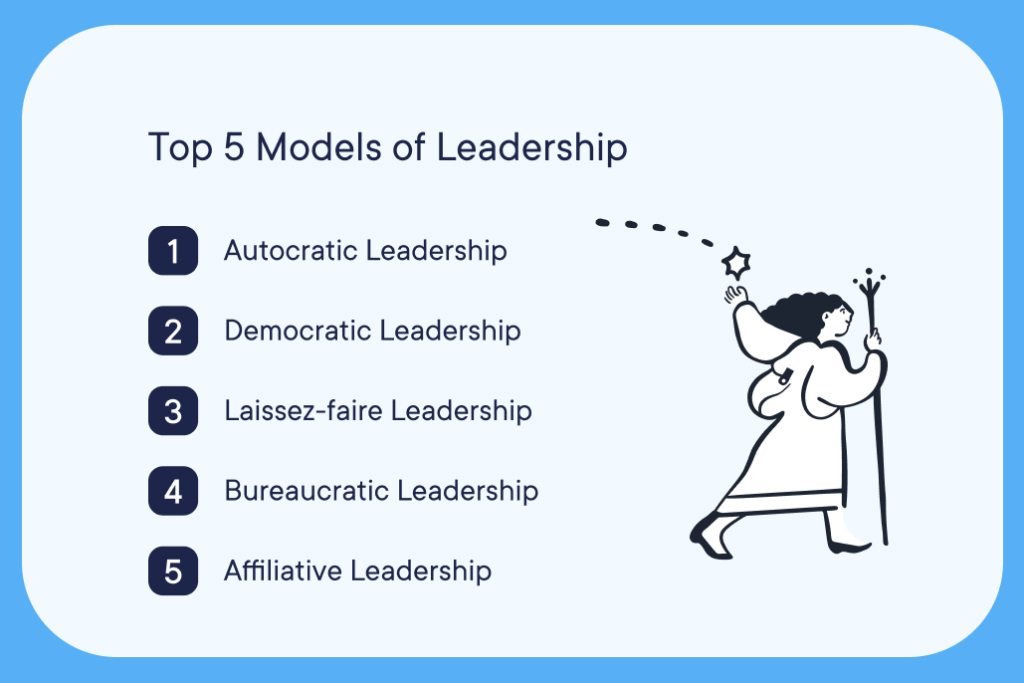
Compare Providers
Download our outplacement comparison sheet
Request Pricing
Compare our rates to other providers
As a human resources professional, you have likely experienced both exemplary and challenging leadership. From managers who offer encouragement and support to supervisors who scrutinize every detail while micromanaging projects, leadership styles can vary widely.
As employees advance in their careers and take on greater managerial responsibilities, defining their identity as a leader is inevitable. Understanding their own leadership style, as well as recognizing the leadership models of their colleagues, can enhance collaboration and effectiveness within your teams.
In this article, we will explore various leadership models that can be adopted within your organization, and examine common leadership styles that you may have encountered in the workplace.
What Are Leadership Models?
Leadership models are comprehensive frameworks that provide a structured understanding of how leadership works. They outline the principles, strategies, and behaviors that define effective leadership in various contexts. Models offer detailed insights into different approaches to leadership, often incorporating multiple styles within them. They serve as guides for understanding the dynamics of leadership and can inform the development of leadership training programs.
Leadership Models vs. Leadership Styles
Although leadership models and leadership styles are similar, they are two distinct concepts. Leadership models are broader and more comprehensive, providing an overarching structure and theoretical background.
On the other hand, leadership styles are the practical implementation of leadership principles in day-to-day interactions. They describe how leaders interact with their teams, make decisions, and handle various situations.
Leadership models can encompass multiple styles within a single framework. For example, the democratic leadership model includes different styles like directing, coaching, and supporting.
Top 5 Models of Leadership
Although there are many leadership models, we’ll be covering five of the most common models of leadership here and explaining what situations may warrant implementing each one.

Autocratic Leadership
Autocratic or authoritarian leadership is characterized by individual control over all decisions with little to no input from group members. Autocratic leaders typically make choices based on their own ideas and judgments and rarely accept advice from others. This leadership model involves centralized decision-making, clear directives, close supervision, and a high degree of control.
The main advantages of autocratic leadership include quick decision-making and clear expectations and instructions, which can be particularly effective in crisis situations. However, this model can lead to low morale, lack of creativity, and resentment among team members due to their lack of involvement and autonomy.
Democratic Leadership
Democratic leadership, also known as participative leadership, involves team members in the decision-making process. This model values the input of group members and peers, although the final decision rests with the leader. Democratic leadership fosters collaborative decision-making, open communication, and high levels of engagement and participation from team members.
The benefits of this approach include high levels of team loyalty and commitment, as team members feel valued and heard. However, decision-making can be slow, and there is potential for conflict if team members disagree. Additionally, this model may not be effective in urgent situations requiring quick decisions.
Laissez-faire Leadership
Laissez-faire or delegative leadership provides team members with a high degree of autonomy and freedom to make decisions. Leaders who choose this model offer minimal direct supervision and allow employees to manage their tasks and solve problems on their own. This hands-off approach is characterized by delegation of decision-making and trust in team members’ abilities and expertise.
The main advantages are the encouragement of innovation and creativity, along with high job satisfaction among self-motivated and skilled employees. On the downside, a lack of direction can lead to confusion and lack of productivity, and poor performance may result if team members lack self-discipline or the necessary skills.
Bureaucratic Leadership
Bureaucratic leadership is based on a structured and formalized approach to leadership, focusing on strictly following rules, procedures, and policies. Leaders who adopt this model emphasize fixed duties within a hierarchy, adherence to rules and regulations, and clear lines of authority.
The benefits of bureaucratic leadership include consistent and predictable results and clear expectations, making it suitable for routine and repetitive tasks. However, this model is often inflexible, and may lead to frustration among employees who seek autonomy and creativity.
Affiliative Leadership
Affiliative leadership prioritizes the emotional well-being and harmony of the team. Leaders who adopt this model focus on building strong emotional bonds, ensuring team members feel valued, and creating a positive work environment. Much like with the similar servant leadership model, Aaffiliative leaders are characterized by empathy, relationship-building, conflict resolution, and a focus on employee morale and well-being.
The advantages of this approach include building strong team trust, improving morale and job satisfaction, and being effective in resolving conflicts and improving team dynamics. However, affiliative leadership can sometimes overlook poor performance or productivity issues in an effort to maintain harmony, and may be less effective in driving results and meeting tight deadlines.
Leadership Models: Key Takeaways
Recognizing one’s own leadership style, as well as understanding the leadership models practiced by colleagues, can greatly enhance collaboration and team performance. Through understanding these leadership models and their respective strengths and weaknesses, you can better identify and develop effective leadership strategies within your organization.
Here are the key takeaways:
- Leadership models provide a structured framework for effective leadership, encompassing various styles that guide day-to-day interactions and decision-making.
- Leadership models and leadership styles are two different concepts. While leadership models offer a broad and comprehensive understanding of leadership principles, leadership styles describe the practical implementation of these principles in everyday scenarios.
- Autocratic leadership involves centralized decision-making with little input from team members, which is effective for quick decisions, but can lead to low morale.
- Democratic leadership encourages team participation in decision-making, fostering engagement and creativity, but can be slow in urgent situations.
- Laissez-faire leadership provides high autonomy to team members, promoting innovation, but may result in a lack of direction and productivity issues.
- Bureaucratic leadership focuses on strict adherence to rules and procedures, ensuring consistency, but often stifling creativity and flexibility.
- Affiliative leadership prioritizes emotional well-being and team harmony, building strong relationships, but sometimes overlooking performance issues.
At Careerminds, our goal is to elevate both individual and organizational performance and efficiency, ensuring everyone in your company can achieve their goals. Our tailored leadership coaching programs are designed to address your specific needs, empowering employees at every level to enhance essential skills, transform habits, boost productivity and accountability, and elevate effectiveness for themselves and their teams.
If you’re interested in learning more about our leadership coaching and development services, click below to connect with our experts and see if Careerminds is the right fit for your organization.
In need of outplacement assistance?
At Careerminds, we care about people first. That’s why we offer personalized talent management solutions for every level at lower costs, globally.



